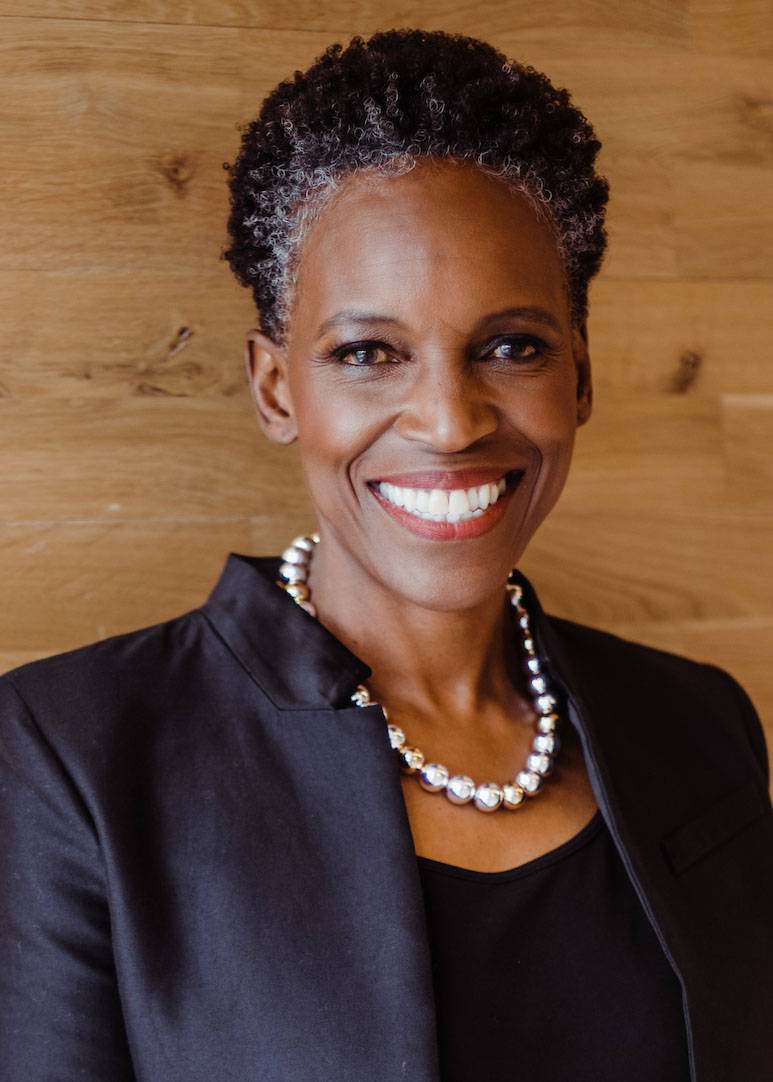
Credit: Boston University Photography
For New BU President, Journalism Was Part of the Family
Medical doctor, researcher and provost discusses her grounding in storytelling, communications, and journalism
Boston University’s 11th president, Melissa L. Gilliam, was introduced to the BU community on October 4. Although she doesn’t take office until July 1, 2024, Gilliam already has a strong personal connection to the missions of many of BU’s 17 schools and colleges, especially COM: she studied English literature at Yale and philosophy and politics at Oxford University; she has a masters in public health from University of Illinois Chicago and a degree from Harvard Medical School. Her father, Sam Gilliam, was a renowned abstract painter. And her mother, Dorothy Butler Gilliam, was a pioneering journalist. “We grew up with a very strong humanitarian focus and a focus on the impact that one could have in the world,” Gilliam says of herself and her two sisters.
Her mother became the first Black woman reporter at The Washington Post in 1961, an experience she detailed in her memoir, Trailblazer: A Pioneering Journalist’s Fight to Make the Media Look More Like America. She was also a leader in the National Association of Black Journalists, a cofounder of the Maynard Institute, which promotes diversity in newsrooms, and helped to establish programs for young professionals and aspiring writers. “That is where I got my commitment to reducing intergenerational poverty through health and education,” Gilliam says.
I was surrounded by journalists and the subjects that they wrote about… We were raised to read the newspaper and know that individual lives and stories mattered.
Melissa L. Gilliam
As a resident in obstetrics and gynecology at Northwestern Memorial Hospital in Chicago, Gilliam began studying teen pregnancy—and experimenting with ways to more effectively communicate with young people. In 2012, she founded the Center for Interdisciplinary Inquiry and Innovation in Sexual and Reproductive Health (Ci3) at the University of Chicago, where games, narrative and design are used to promote the health and well-being of young people.
In a recent email exchange with COMtalk, Gilliam shared some lessons learned from her journalist mother and from her own search for creative communication solutions as a researcher.
- Individual lives and stories matter
“I was surrounded by journalists and the subjects that they wrote about. It was the heyday of the Post—Watergate and the Pentagon Papers. So, we were raised to read the newspaper and know that individual lives and stories mattered.” - Young people should be taken seriously
“My mother covered the early Civil Rights Movement. Journalists and the people they covered risked and lost their lives. Many of them were very young at the time. I believe this is where I get my commitment to young people and why I have always taken their ideas seriously.” - New methods are needed to learn about young people on their own terms
“Traditional research methods use observation, surveys and focus groups. In my early research, I tried to learn about young people using only traditional methods [but] they told me they just check out when adults ask them questions, because we are so off base to begin with. So I started reading people like Vonnie McLoyd, who talked about the need to learn about young people on their own terms.” - Unexpected collaborations can unlock ideas
“I started working with experts in digital storytelling; I wanted to bring technology into the work so young people could learn to create digital content. It has been a pretty magical ride—my main collaborators are in the English department, the Harris School of Public Policy and the Crown Family School of Social Work, Policy and Practice at the University of Chicago, and I collaborate with an amazing group of artists, storytellers, game designers and researchers at the University of Chicago and Ohio State University.” - Listen deeply
“So often we ask questions and already have the answer in our mind—we are asking people to ‘fill in the blank.’ With practice and time, we can learn to listen deeply to one another.
This interview has been edited for clarity and brevity.
Meet Melissa L. Gilliam
Full coverage of the historic announcement of BU’s next president:


